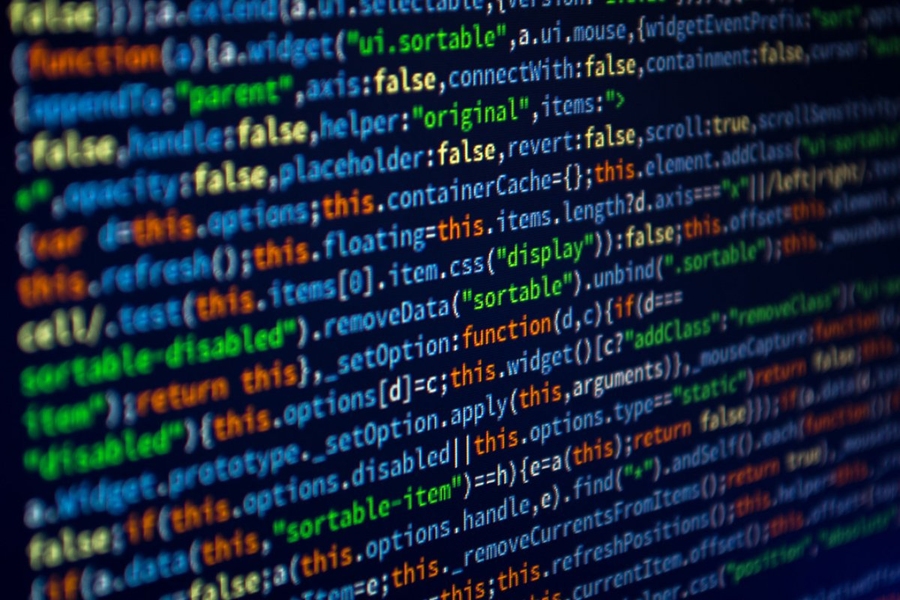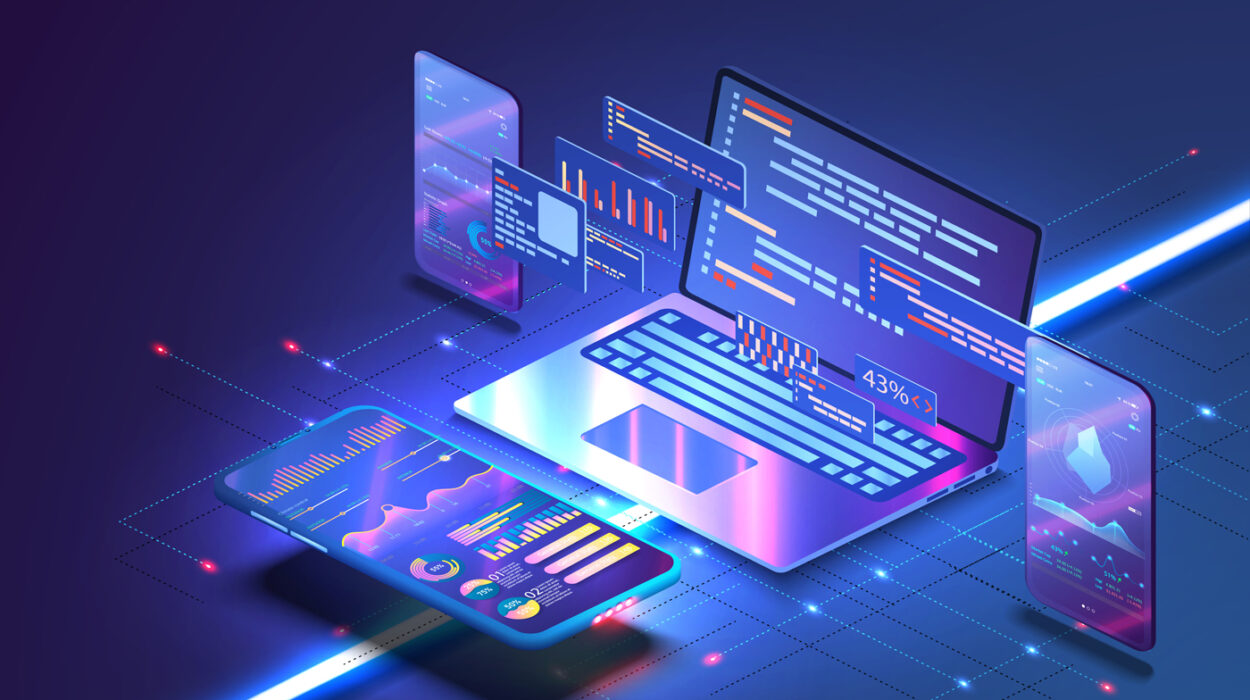In the modern digital age, algorithms are the invisible engines that drive our daily lives. They power our smartphones, guide the flow of global financial markets, recommend what we watch and buy, and even influence our political opinions. While the term “algorithm” might sound abstract or technical, its impact is profoundly tangible—affecting how we communicate, work, learn, and perceive the world.
At its simplest, an algorithm is a set of rules or instructions designed to perform a specific task or solve a problem. Yet in today’s interconnected world, algorithms have evolved into complex systems capable of learning, adapting, and making autonomous decisions. From artificial intelligence to data analytics, they underpin nearly every technological system we depend on. Understanding how algorithms shape modern society is not just a matter of computer science—it is essential to grasping the very fabric of the 21st century.
The Origins and Evolution of Algorithms
The concept of algorithms predates modern computing by centuries. The term itself is derived from the name of the Persian mathematician Muhammad ibn Musa al-Khwarizmi, whose works in the 9th century introduced systematic methods for solving mathematical problems. His treatises on arithmetic and algebra laid the foundation for computational logic, giving rise to the term algorithm.
For much of history, algorithms were purely mathematical constructs used to perform calculations manually. With the advent of mechanical computing devices in the 19th century—such as Charles Babbage’s Analytical Engine and Ada Lovelace’s pioneering notes on programming—the idea of encoding algorithms into machines took shape. The true revolution, however, began in the 20th century with the development of electronic computers and the formalization of computation by Alan Turing.
Turing introduced the concept of a “universal machine,” capable of executing any algorithm that could be described mathematically. His work established the theoretical framework for computer science, transforming algorithms from abstract procedures into executable processes. As computing technology advanced through the mid-20th century, algorithms became central to fields ranging from cryptography to computer graphics.
The digital explosion of the late 20th and early 21st centuries turned algorithms into a ubiquitous presence. The rise of the internet, social media, artificial intelligence, and data analytics brought algorithms out of research laboratories and into everyday life. Today, billions of algorithmic processes operate simultaneously around the globe—an invisible web of logic guiding modern civilization.
Understanding What an Algorithm Really Is
An algorithm is, at its core, a precise sequence of steps that leads to a desired outcome. It could be as simple as following a recipe to bake bread or as complex as a neural network that recognizes human faces. What distinguishes an algorithm is its logical structure: it processes inputs, applies a series of operations, and produces outputs.
In computer science, algorithms are implemented through programming languages that translate abstract logic into executable code. Efficiency—how fast an algorithm runs and how much computational power it uses—is crucial, especially when dealing with vast data sets. Algorithms can be deterministic, meaning they always produce the same result given the same input, or probabilistic, meaning they involve elements of randomness or statistical inference.
As machine learning and artificial intelligence have evolved, algorithms have gained the ability to “learn” patterns from data rather than relying on rigid instructions. Such adaptive algorithms can adjust their parameters based on feedback, improving their performance over time. This shift—from static to dynamic computation—marks one of the most profound transformations in the history of technology.
Algorithms in the Digital Infrastructure
Virtually every digital system we interact with is governed by algorithms. They control the routing of internet traffic, manage databases, encode and compress data, and ensure the security of digital communications. Search engines like Google rely on complex ranking algorithms that evaluate billions of web pages in fractions of a second to deliver the most relevant results.
Behind every social media post or video recommendation lies an algorithm designed to maximize engagement. Platforms such as Facebook, YouTube, TikTok, and Instagram use data-driven models to determine what content to show users, when to show it, and how often. These algorithms analyze user behavior—likes, shares, watch time, and interaction patterns—to predict what will hold attention.
Financial systems also depend on algorithms for trading, risk management, and fraud detection. High-frequency trading algorithms execute millions of transactions per second, exploiting minute market fluctuations. While these systems increase efficiency, they also introduce volatility and complexity that can lead to sudden market disruptions.
Even transportation infrastructure runs on algorithms. GPS navigation systems calculate optimal routes using real-time traffic data, while airlines and logistics companies rely on optimization algorithms for scheduling, fuel efficiency, and cargo distribution. In cities, algorithms coordinate traffic lights, monitor public transportation, and even predict where maintenance will be needed.
The Role of Algorithms in Artificial Intelligence
Artificial intelligence (AI) represents the next frontier of algorithmic development. Unlike traditional algorithms, which follow explicit instructions, AI algorithms can process vast amounts of data to identify patterns, make predictions, and even generate original content.
Machine learning is the most prominent subset of AI. It enables computers to learn from data without being explicitly programmed for every task. Supervised learning algorithms train on labeled data sets to make classifications or predictions—for example, detecting spam emails or predicting stock prices. Unsupervised learning algorithms find hidden structures in data, such as grouping customers with similar purchasing habits.
Deep learning, a more advanced branch of machine learning, uses artificial neural networks inspired by the human brain. These networks can contain millions or billions of interconnected nodes that process information in layers, allowing them to recognize complex patterns such as speech, handwriting, and images. Deep learning algorithms power voice assistants like Siri and Alexa, facial recognition systems, autonomous vehicles, and natural language processing tools like ChatGPT.
Reinforcement learning, another AI paradigm, allows algorithms to learn through trial and error. This method has produced systems capable of mastering games like chess and Go at superhuman levels. By optimizing actions based on feedback, reinforcement learning algorithms can make complex decisions in uncertain environments, such as controlling robots or managing dynamic supply chains.
Algorithms and Big Data
The modern world produces an immense amount of data every second—social media posts, satellite images, medical records, financial transactions, and more. Algorithms are essential for making sense of this overwhelming information.
Data mining algorithms sift through vast data sets to identify patterns, correlations, and anomalies. Predictive analytics algorithms use statistical models to forecast future trends. Recommendation algorithms personalize user experiences on streaming platforms, shopping websites, and news apps.
In healthcare, algorithms analyze medical images, predict disease risks, and assist in drug discovery. In climate science, they model complex systems of the atmosphere and oceans to predict weather and climate change. In manufacturing, algorithms monitor production lines, detect defects, and optimize supply chains.
The integration of algorithms with big data has created what is often called the “data economy.” Companies leverage user data to refine products, target advertising, and predict consumer behavior. Governments use data analytics for planning, security, and resource management. While this brings efficiency, it also raises profound questions about privacy, surveillance, and the ownership of information.
Algorithms in Communication and Media
Communication in the digital age is inseparable from algorithmic mediation. Every message sent, received, or displayed online passes through algorithmic filters. Social media platforms use algorithms to prioritize content, decide what appears in your feed, and amplify certain topics over others.
News distribution is also deeply shaped by algorithms. Online news aggregators and search engines personalize results based on a user’s browsing history, location, and interests. While this personalization helps deliver relevant information, it can also create “filter bubbles,” where users are exposed only to content that reinforces their existing beliefs.
Streaming services such as Netflix, Spotify, and YouTube rely on recommendation algorithms to retain user engagement. These algorithms learn from users’ preferences, viewing history, and demographic data to suggest new content. The more time a user spends on the platform, the more refined the algorithm becomes—creating a feedback loop that sustains engagement and revenue.
Algorithms also influence digital advertising. Platforms use them to target specific demographics with precision, maximizing the impact of marketing campaigns. Every ad displayed on your social media feed or search result page is selected through a real-time auction driven by complex algorithms analyzing user data in milliseconds.
The Algorithmic Economy
The global economy is increasingly algorithmic. Algorithms determine stock prices, forecast demand, and set dynamic prices for goods and services. Online marketplaces such as Amazon and eBay rely on algorithms to rank products, manage logistics, and adjust prices based on supply, demand, and competitor behavior.
In the financial sector, algorithmic trading dominates global markets. Automated systems analyze market conditions and execute trades far faster than human traders could react. These algorithms can optimize portfolios, hedge risks, and exploit arbitrage opportunities. However, they can also amplify market volatility when automated systems respond to each other’s actions in unpredictable ways.
The gig economy—exemplified by companies like Uber, DoorDash, and Airbnb—is also governed by algorithms. These platforms use algorithms to match customers with drivers, set prices dynamically, and evaluate performance. While this improves efficiency, it has sparked debates about labor rights, fairness, and transparency.
In manufacturing and logistics, algorithms optimize production schedules, manage inventory, and predict maintenance needs. Supply chain algorithms integrate real-time data from multiple sources, allowing companies to respond quickly to disruptions. In agriculture, they help monitor soil health, predict crop yields, and automate irrigation systems.
Algorithms and the Human Mind
Algorithms increasingly mimic, model, and even influence human cognition. Cognitive algorithms attempt to replicate aspects of human thinking such as memory, attention, and decision-making. Through neural networks and cognitive computing, machines can now process natural language, recognize emotions, and generate creative outputs such as art, music, and text.
This interplay between human and machine intelligence blurs traditional boundaries. Recommendation algorithms subtly shape our preferences by curating what we see, while predictive algorithms anticipate our needs before we even express them. Over time, these systems can modify human behavior through reinforcement, creating psychological dependencies.
The human mind, in turn, adapts to algorithmic environments. Our attention spans, communication patterns, and even sense of identity are being reshaped by digital algorithms that reward engagement. The more we interact with algorithmic systems, the more they learn about us—and the more accurately they can influence our decisions.
Ethical and Social Implications
As algorithms grow more powerful and pervasive, their ethical and social consequences become increasingly significant. One of the most pressing concerns is bias. Algorithms are only as fair as the data they are trained on. If historical data contains biases related to race, gender, or socioeconomic status, the resulting algorithm may reproduce or even amplify those biases.
Algorithmic bias has been documented in numerous domains: hiring algorithms that favor certain demographics, facial recognition systems that misidentify people of color, and predictive policing models that disproportionately target specific communities. Addressing these issues requires transparency, accountability, and diverse data representation.
Privacy is another major concern. Algorithms depend on vast amounts of personal data to function effectively. This raises questions about consent, data ownership, and surveillance. Governments and corporations collect and process data on a scale unprecedented in human history, often with minimal oversight. The challenge lies in balancing innovation and efficiency with individual rights and autonomy.
Moreover, the increasing reliance on algorithms in decision-making—such as credit scoring, medical diagnosis, and parole recommendations—poses risks when humans defer too much to machine judgment. Ensuring that algorithms remain tools for human empowerment rather than instruments of control is a central ethical challenge of our time.
Algorithms in Politics and Governance
Algorithms have entered the political sphere, transforming how societies govern and how citizens engage with power. Political campaigns use data-driven algorithms to target voters with personalized messages. Social media algorithms influence political discourse by amplifying certain narratives, often contributing to polarization.
Governments use algorithms for surveillance, predictive policing, and social welfare management. While these tools can improve efficiency and security, they can also threaten civil liberties if misused. For example, predictive policing systems rely on historical crime data that may reflect existing biases, leading to discriminatory outcomes.
Algorithmic governance—where decisions about resource allocation, benefits, or risk assessments are automated—raises profound questions about accountability. If an algorithm denies someone a loan or access to social services, who is responsible? As governments increasingly rely on automated systems, transparency and explainability become essential for maintaining public trust.
The Environmental Impact of Algorithms
The computational infrastructure that supports modern algorithms consumes significant energy. Data centers that power cloud computing, artificial intelligence, and online platforms require vast amounts of electricity for processing and cooling. Training large machine learning models can have a carbon footprint comparable to that of several cars over their lifetimes.
Efforts are underway to develop more energy-efficient algorithms and hardware. Techniques such as model compression, distributed computing, and the use of renewable energy in data centers aim to reduce environmental impact. However, as demand for computational power continues to grow, balancing technological progress with ecological sustainability remains a major challenge.
Transparency and Explainability
One of the defining challenges of the algorithmic age is the “black box” problem. Many algorithms, especially those based on deep learning, are so complex that even their creators cannot fully explain how they arrive at specific decisions. This opacity undermines accountability, especially in critical areas like healthcare, law enforcement, and finance.
Explainable AI (XAI) is an emerging field that seeks to make algorithms more interpretable. It aims to provide human-understandable justifications for algorithmic decisions, enabling users to trust and verify outcomes. Transparent algorithms not only enhance accountability but also improve fairness by allowing biases to be detected and corrected.
Regulatory efforts such as the European Union’s General Data Protection Regulation (GDPR) emphasize the right to explanation, ensuring that individuals can understand and challenge automated decisions affecting them. As algorithms continue to shape essential aspects of life, transparency becomes not just a technical goal but a moral imperative.
The Future of Algorithmic Society
The influence of algorithms will only grow as technology advances. Quantum computing, for instance, promises to revolutionize algorithmic capabilities by performing calculations exponentially faster than classical computers. This could transform fields such as cryptography, drug discovery, and climate modeling.
In the near future, algorithms will continue to integrate with physical environments through the Internet of Things (IoT), where everyday objects—from refrigerators to traffic systems—communicate autonomously. Smart cities will rely on interconnected algorithms to manage energy, transportation, and public safety in real time.
As artificial intelligence matures, algorithms may take on increasingly complex roles in governance, education, and even creativity. Autonomous systems will not just follow human instructions but collaborate with humans to solve global challenges. However, this evolution demands responsible oversight to ensure that technological power remains aligned with human values.
The Human Role in an Algorithmic World
Despite their sophistication, algorithms are human creations. They embody the assumptions, priorities, and biases of their designers. Recognizing this human element is crucial for maintaining control over algorithmic systems. Society must cultivate digital literacy, ethical awareness, and critical thinking to navigate the algorithmic landscape responsibly.
The future of algorithms should not be one of domination but collaboration. Humans and algorithms can work together to enhance decision-making, improve efficiency, and foster creativity. In medicine, education, and environmental science, algorithmic tools can augment human expertise rather than replace it.
Ultimately, the challenge is to design algorithms that serve humanity rather than the other way around. This means embedding ethical principles—fairness, accountability, and transparency—into the very fabric of algorithmic systems.
Conclusion
Algorithms have become the hidden architecture of the modern world. They power our technologies, shape our economies, and influence our thoughts and behaviors. From artificial intelligence to social media, from finance to healthcare, algorithms are transforming the structure of society at every level.
Yet with this immense power comes responsibility. The decisions made by algorithms affect billions of lives, and their ethical, social, and environmental implications cannot be ignored. Understanding how algorithms work—and ensuring they are designed and used wisely—is one of the defining challenges of our era.
As we move deeper into the age of intelligent machines, the question is not whether algorithms will shape the world—they already do. The question is what kind of world we will build with them. The future of humanity depends not only on the algorithms we create but on the wisdom with which we choose to guide them.






